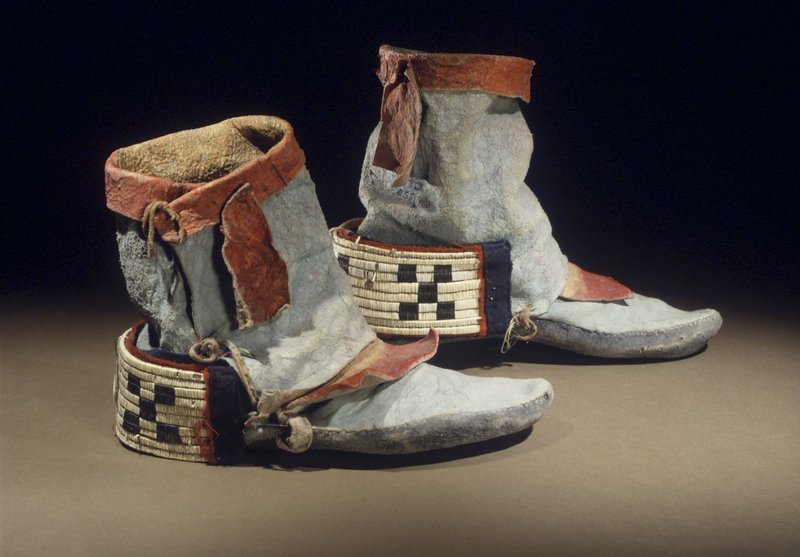Dancing Shoes Item Number: 05.588.7175a-b from the Brooklyn Museum

Description
The blue color of these high top shoes indicates they may have been worn by Kachina Dancers. The red fringe was colored by dye made from alder bark or rubbed iron oxide. Calcium carbonate might have created the blue color. A band of porcupine quills covers the heels.
Credit Line
Museum Expedition 1905, Museum Collection Fund
Label
These Native American objects represent just a few of the items made in the late nineteenth and the early twentieth century, primarily for sale to dealers and collectors to satisfy the growing market for indigenous products. Finely coiled baskets like the example by the Maidu weaver Mary Kea’a’ala Azbill were in great demand, as were Zuni Kachina dolls. The desire for Eskimo objects such as the ivory pipe engraved with a whale-hunting scene was accelerated by the Klondike Gold Rush in 1897. To appeal to non-Native patrons, Native artists invented new designs using trade materials such as the glass beads forming the embroidered floral arrangement on the northeastern puzzle bag (so named for the way its pieces fold together to keep it closed). Other artists used traditional materials but tailored designs to non-Native aesthetics, as seen in the porcupine-quill box. The Navajo quickly adapted to the Spanish introduction of silver coins and silver mining in the seventeenth century, embellishing their traditional wrist guards with hammered silver. Some artists retained both traditional materials and designs but produced greater quantities of popular items such as the Plains owl pipe bowl made from Catlinite (red pipestone).
Item History
- Made between 1868 and 1899
What
- Name
- Dancing Shoes
- Identification Number
- 05.588.7175a-b
- Type of Item
- dancing and shoe
- Material
- deer hide, pigment, sinew, porcupine quill, horse hair and wool
- Overall
- length 10.1875 in, width 4.3125 in, height 7.3125 in
Who
- Culture
- Hopi Pueblo
Where
- Holding Institution
- Brooklyn Museum
When
- Creation Date
- between 1868 and 1899
Other
- Classification
- Clothing